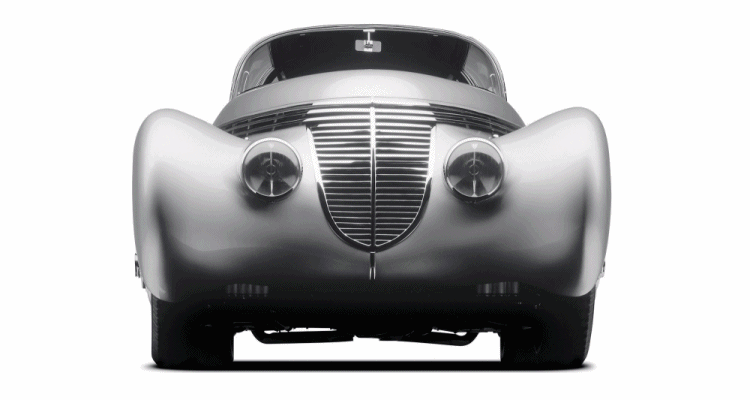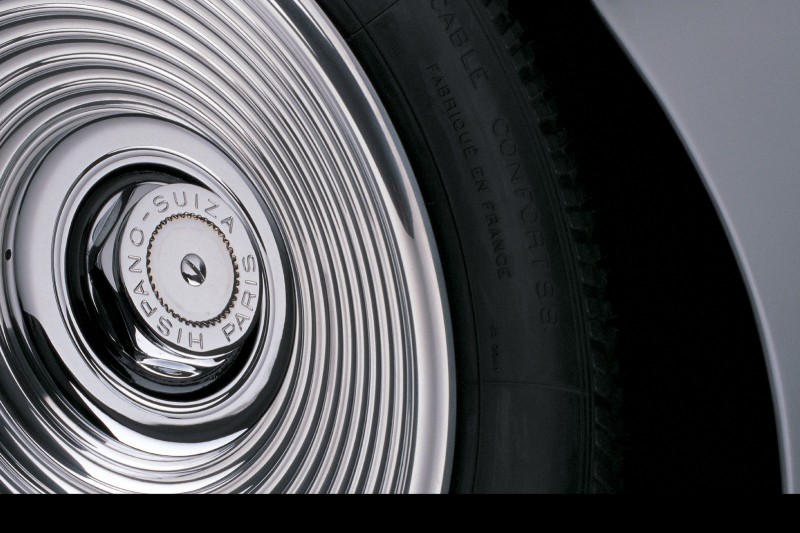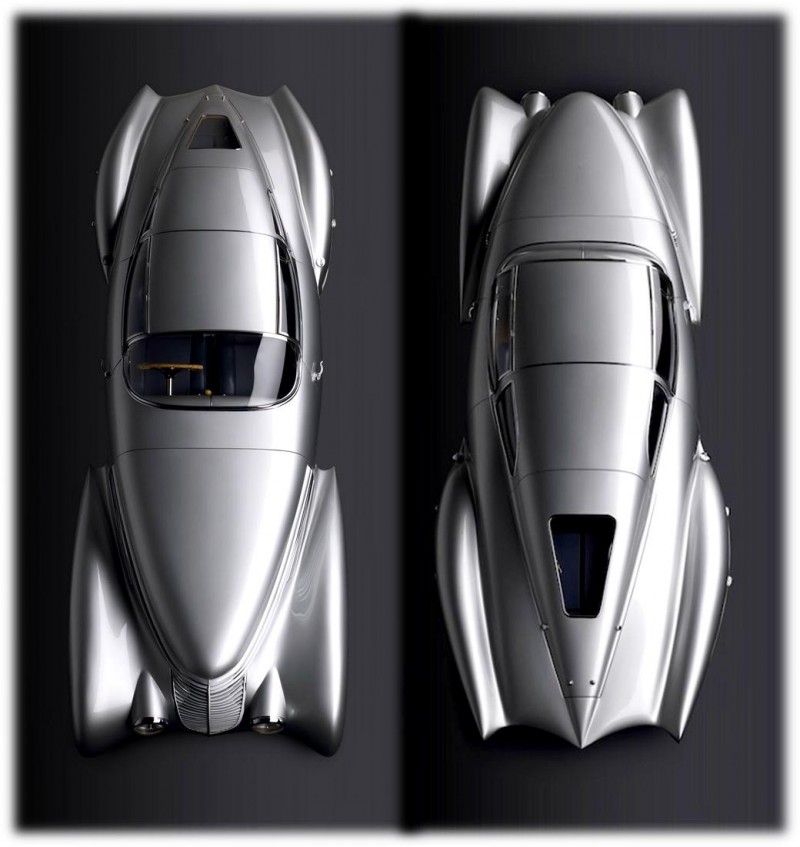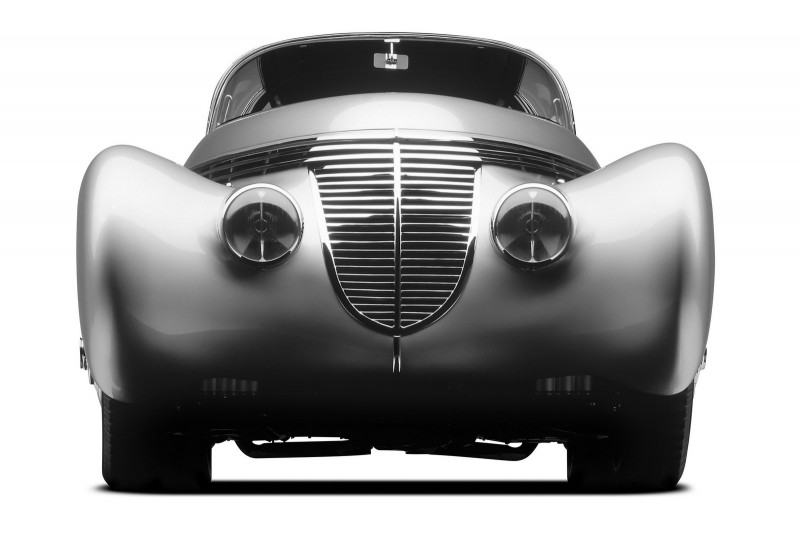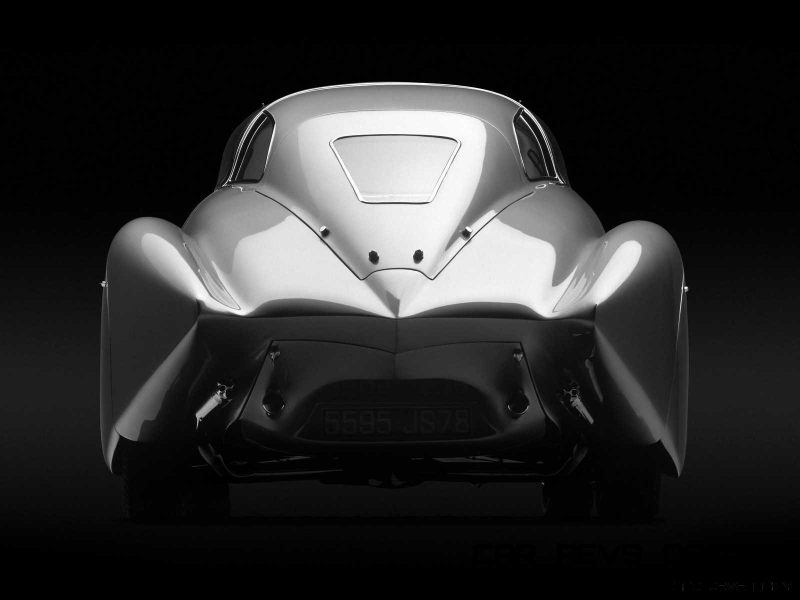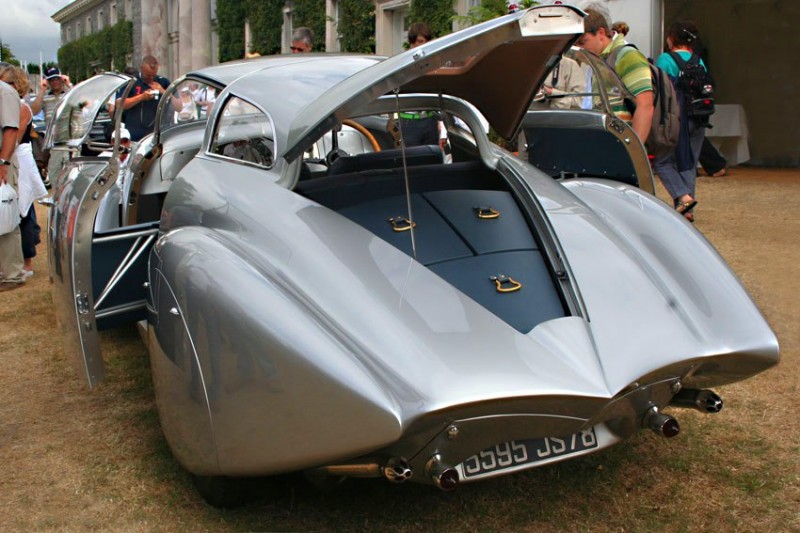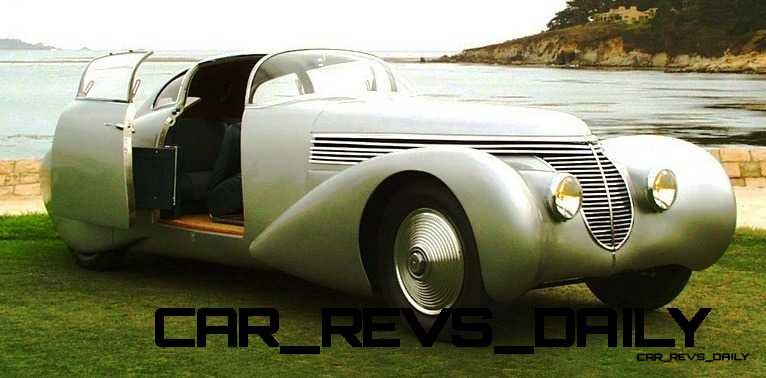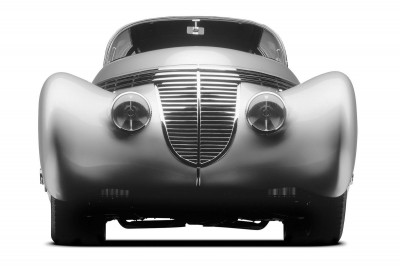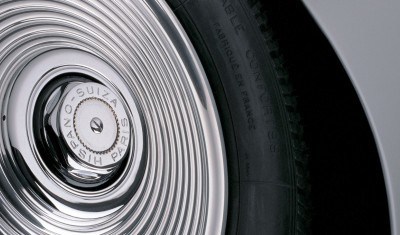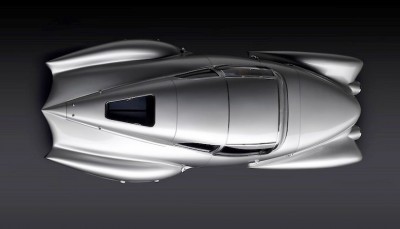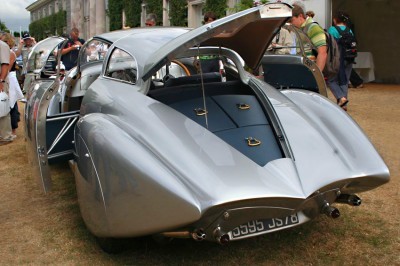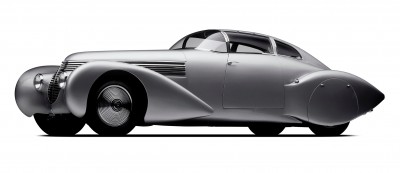If it seems like we have an unhealthy fascination for the Mullin Automotive Museum, you might be right.
The cars inside this Oxnard, California collection just… write their own stories.
I have a dozen more that I would like to feature, but we must start at the true nexus – or “Xenia” perhaps – of the art of French coach-building by Jacques Saoutchik and his contemporaries.
How all these cars got to sunny California is no accident. In many cases – the cars in the collection were painstakingly built – sometimes from only drawings – over a decades-long process.
The Mullin Museum is preparing an exciting exhibit for Spring 2014 titled, simply, the “Art of Bugatti.”
The centerpiece of the exhibit will hopefully be the hand-crafted Bugatti coupe streamliner whose wood frames look like a whale ribcage. Wood frames? To hand-beat the alloy panels to shapes beyond any machine.
The below hubcap is an optical illusion. Sometimes, it seems convex. The next glance, concave.
 It seems the Bugatti legend was always building and crafting things, and Mullin Museum will bring it all to life together with some of their best cars. The world’s best cars.
It seems the Bugatti legend was always building and crafting things, and Mullin Museum will bring it all to life together with some of their best cars. The world’s best cars.
This Xenia just got back from a summer engagement with the Art Deco gala in Nashville, but has already seen more of the world than most of us in her 75 years on earth.
Enjoy the expertly-written brief of “Car 32” at the Mullin Automotive Museum in Oxnard California.
1938 Dubonnet Hispano-Suiza H6C “Xenia”
2000 PEBBLE BEACH CONCOURS D’ELEGANCE “MOST ELEGANT CLOSED CAR”
2009 GOODWOOD, FESTIVAL OF SPEED “BEST IN SHOW”

ANDRE DUBONNET was the heir to the Dubonnet aperitif fortune and the man responsible for this automobile. He served in the “Stork” squadron during World War I and is credited with five aerial victories. Dubonnet was an accomplished amateur racing driver and inventor. Working with engineer Antoine-Marie Chedru, he patented a four-wheel independent “hyperflex” suspension system in 1927 that he promoted as having the “suppleness of a cat”. This ingenious system was used in different variations by GM, Fiat, Delahaye and Alfa Romeo.
To create a rolling showcase for his ideas, Dubonnet purchased and extensively modified a Hispano-Suiza chassis that he had seen at the 1932 Paris Salon. The car was designed by Jean Andreau, a man known for designing avant-garde streamlined aircraft and automomobiles. In 1938 Dubonnet employed renowned coachbuilder Jacques Saoutchik to construct this revolutionary body – Dubonnet’s fifth prototype attempt – that he named “Xenia” after his late-wife.

Xenia was hidden during the war, and did not reappear until June 9, 1946 at the opening of the Saint Cloud highway tunnel outside Paris. Alain Balleret, President of the French Hispano-Suiza Club, purchased Xenia in the 1960s and subjected the car to restoration. In 1999 the American Charles Morse purchased it at auction. Peter Mullin purchased Xenia in 2003. Today, this car is owned by the Peter Mullin Automotive Museum Foundation.
SPEC OVERVIEW:
-
Coachbuilder: Jacques Saoutchik
-
Chassis No. 103
-
Production No. 1 of 1 Produced
-
Engine No. 103
-
Aluminum Inline Six-Cylinder Engine
-
160 BHP At 3,050 RPM
-
7,983 CC
-
Overhead Camshaft,
-
4-Speed Manual Gearbox
-
Solid Front Axle, Live Rear Axle With Four-Wheel Independent “Hyperflex” (Coil Spring) Suspension
-
4-Wheel Servo-Assisted Drum Brakes
Image credits to Michael Fuhrman Photography Limited, the Mullin Museum Collection, Goodwood #FoS

Tom Burkart is the founder and managing editor of Car-Revs-Daily.com, an innovative and rapidly-expanding automotive news magazine.
He holds a Journalism JBA degree from the University of Wisconsin – Madison. Tom currently resides in Charleston, South Carolina with his two amazing dogs, Drake and Tank.
Mr. Burkart is available for all questions and concerns by email Tom(at)car-revs-daily.com.

